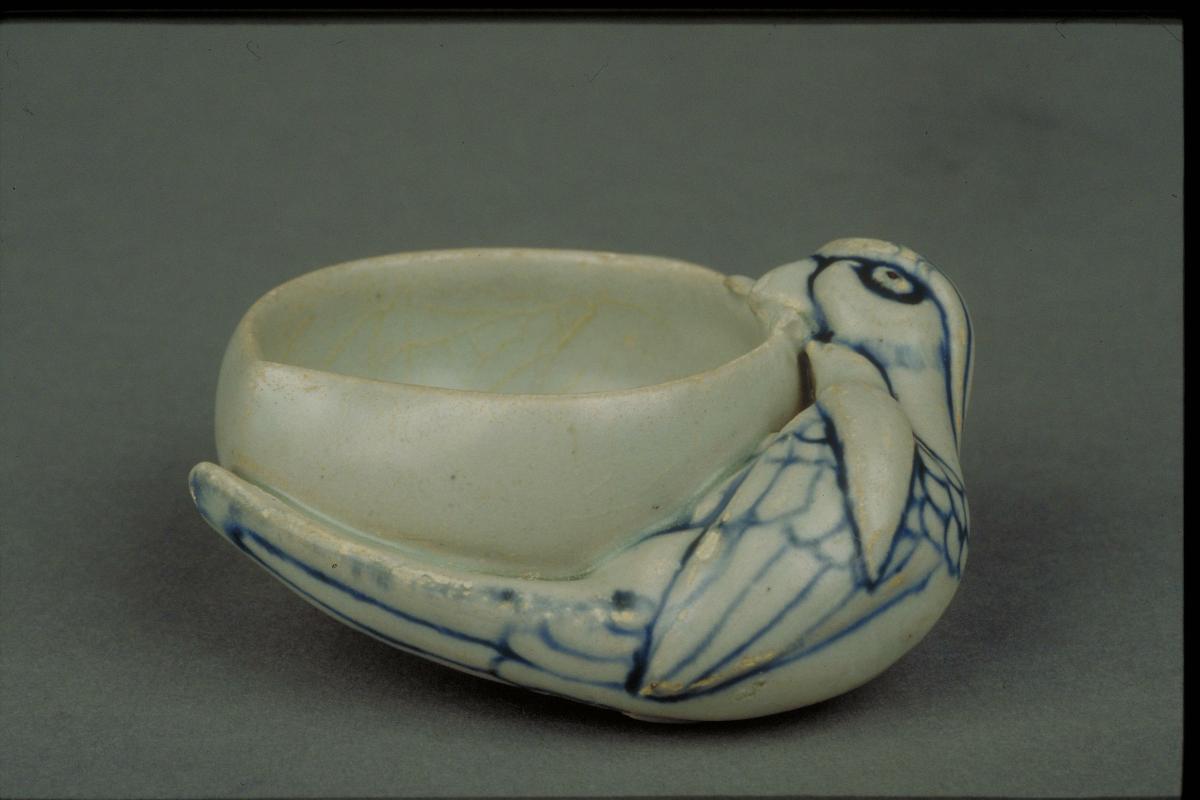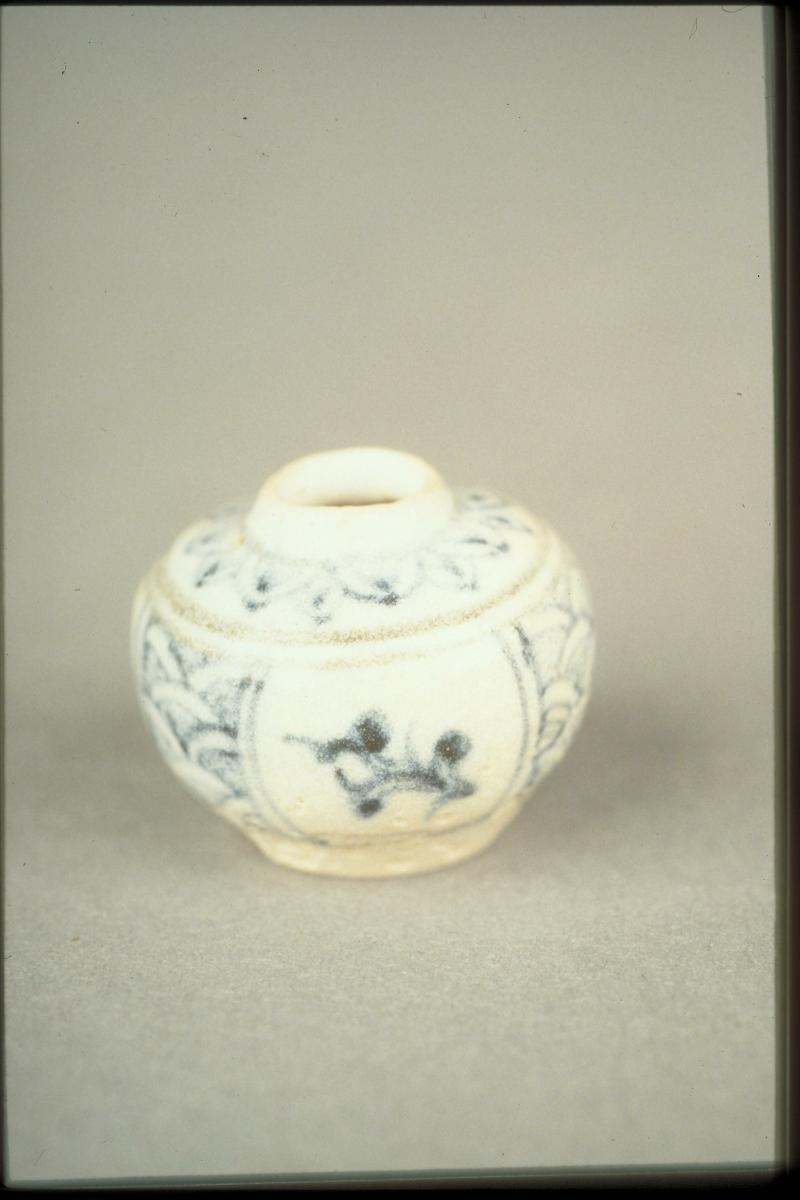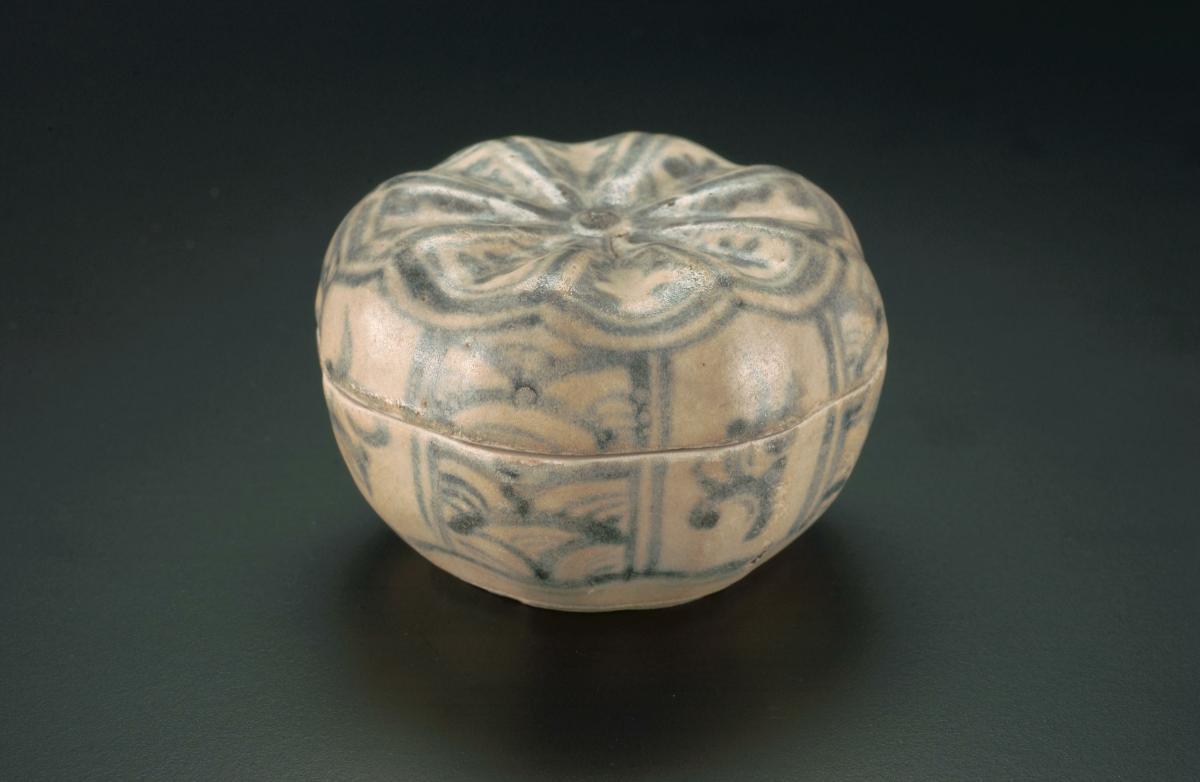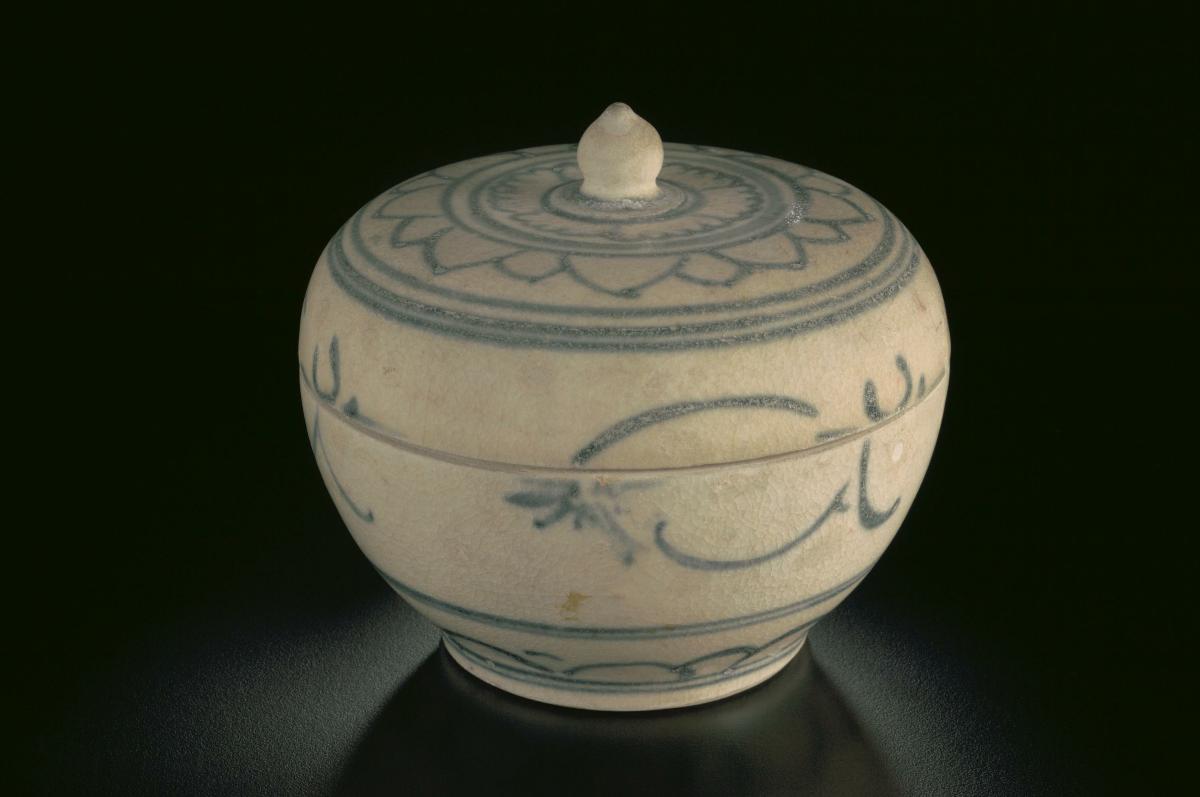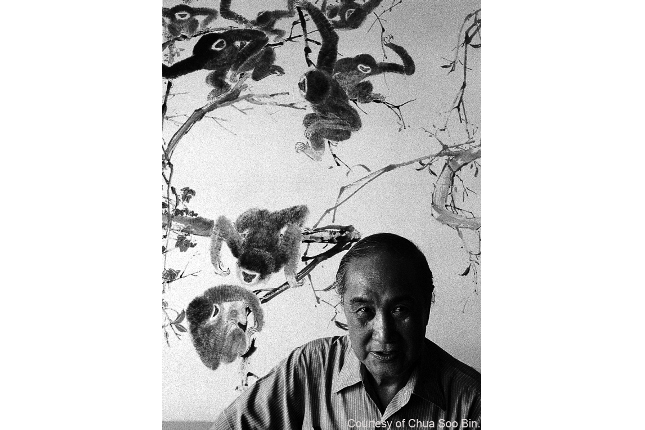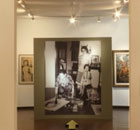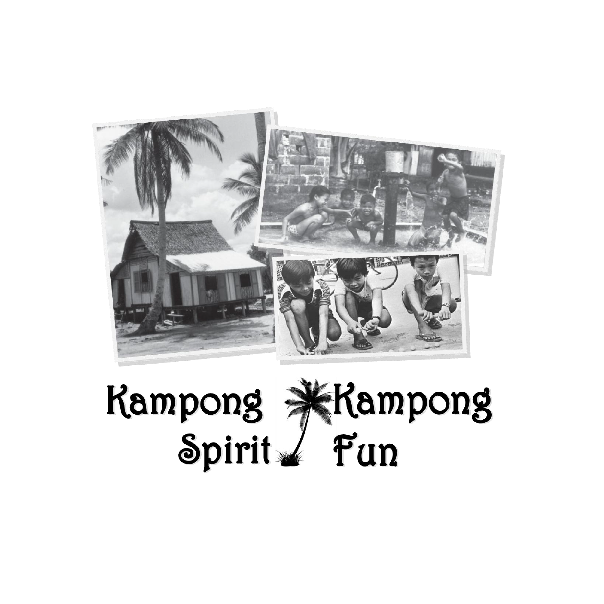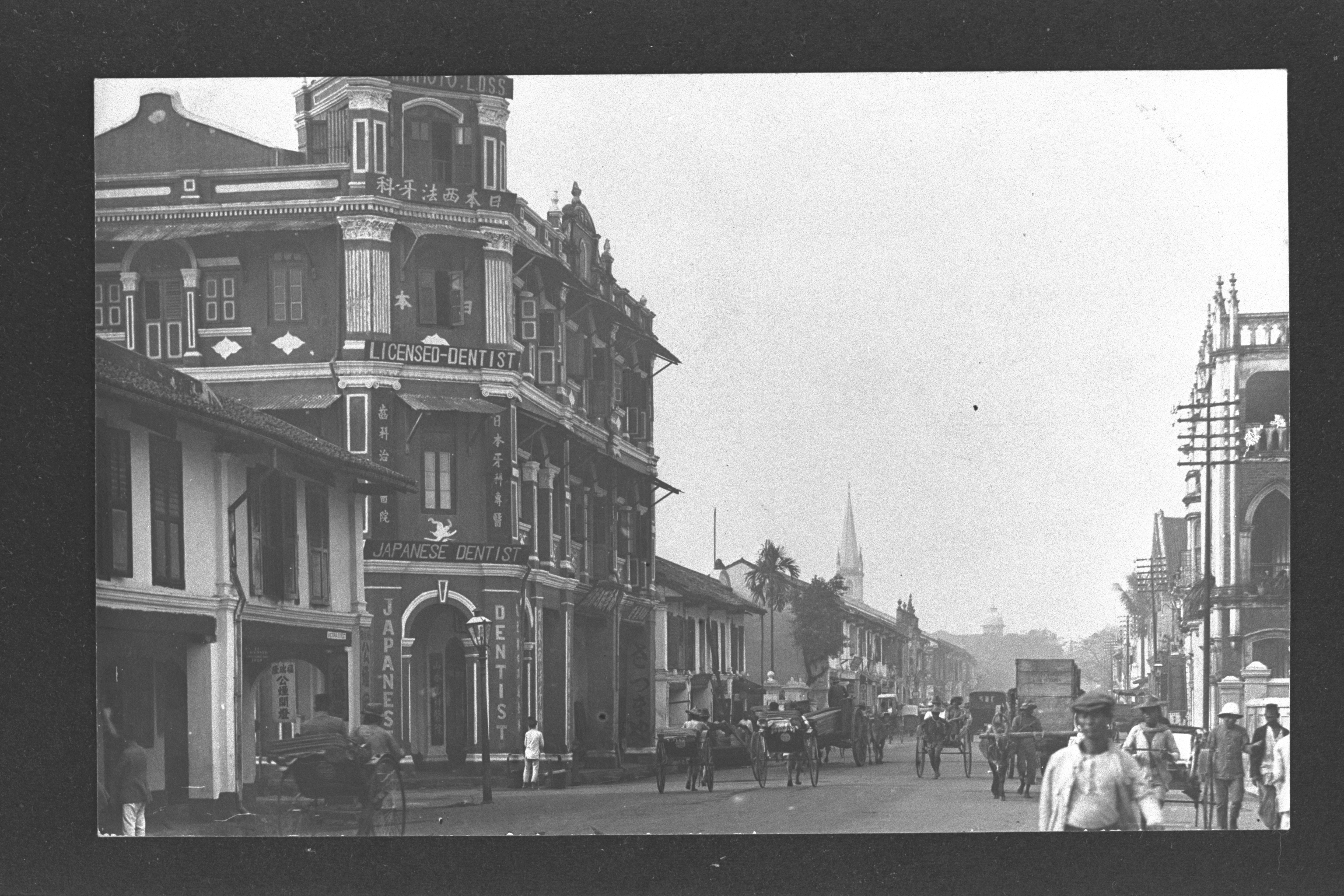This is a water-dropper in the form of a parrot eating a peach. The water-dropper was potted on a wheel while the parrot was moulded and attached, after which, fine blue glaze was painted onto the surface. Although heavily influenced by the Chinese ceramic tradition, Vietnam materials and potting styles are unique. Technically not ‘porcelain’, which is translucent and pure white, these stonewares are different in appearance from Chinese and other Southeast Asian ceramics. Vietnamese wares are typically more heavily potted and have an off-white clay body. Cobalt oxide could have been imported from West Asia via China to produce the blue tones.Vietnam entered the international trade during the 14th century and produced the greatest volume and variety of wares for Southeast Asia, particularly Indonesia, the Philippines and Malaysia. Water droppers such as these have been found with large quantities of blue-and-white wares in Southeast Asia, where they were exported during the 15th century.However, by the 16th century, due to intense competition from the Chinese kilns, the export of Vietnamese wares to these markets was greatly reduced.





